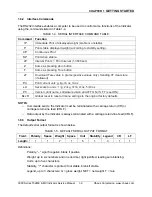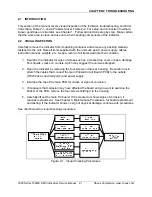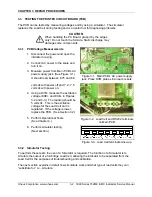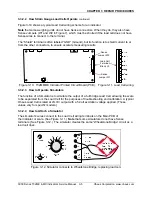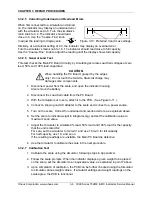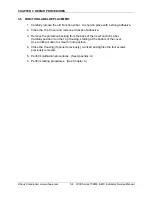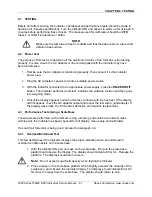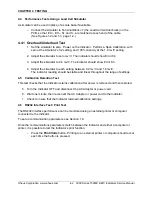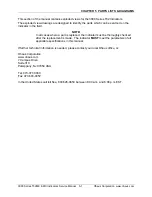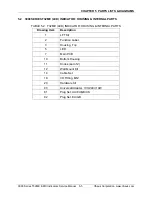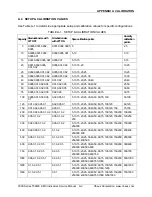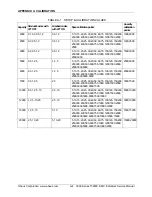
CHAPTER 3 REPAIR PROCEDURES
Ohaus Corporation www.ohaus.com
3-6 3000 Series T32ME & MC Indicators Service Manual
3.3.2.5 Correcting Underload and Overload Errors
When first connected to a simulator and turned
on, the indicator may display an underload error
with the simulator set to 0. Turn the simulator’s
main knob to 0.2. The indicator should read
close to 0. Use the “Coarse-Fine” knob
to adjust the reading to display zero.
Figure 3-13. Preferred 0 and max settings.
Similarly, at a simulator setting of 2.0, the indicator may display an overload error.
Turn the simulator’s main knob to 1.8. The indicator should read close to full capacity.
Use the “Coarse-Fine” knob to adjust the reading until the display shows full capacity.
3.3.2.6 General Load Test
This test checks the Main PC Board circuitry by simulating accurate Load Cell voltages at zero
load, 50% and 100% load capacities.
CAUTION
When handling the PC Board, grasp it by the edges
only! Do not touch the foil side. Static discharge may
damage some components.
1. Disconnect power from the scale, and open the indicator housing.
Also remove the battery.
2. Disconnect the Load Cell cable from the PC Board.
3. With the Simulator set to zero, attach it to the PCB. (See Figure 3-11.)
4. Connect a known good AC Adapter to the scale and connect to a power source.
5. Turn on the scale. Correct for underload and overload errors, as explained above.
6. Set the scale to indicate weight in kilograms (kg) and set the calibration value to
maximum span value.
7.
Adjust the Simulator to simulate 0% load, 50% load and 100% load for the capacity
that the unit is rated for:
For zero, set the simulator to 0.2mv/V, and use 1.8mv/V for full capacity.
For half capacity, use 1.0, and so on.
If the resulting readings are unstable, the Main PC Board is defective.
8.
Use the Simulator to calibrate the scale in the next procedure.
3.3.2.7 Calibration
Test
1. Calibrate the scale using the simulator, following steps in Appendix A.
2. Follow the scale prompts. When the indicator displays a given weight to be placed
on the scale, set the simulator to an equivalent value, as explained in point 7 above.
3. Upon completion of calibration, the PCB can be further checked using the Simulator
to simulate various weight values. If simulator settings and weight readings on the
scale agree, the PCB is functional.
FINE
OFF
COARSE
Содержание T32ME
Страница 2: ......
Страница 4: ......
Страница 8: ...TABLE OF CONTENTS Ohaus Corporation www ohaus com iv 3000 Series T32ME MC Indicators Service Manual...
Страница 22: ...CHAPTER 2 TROUBLESHOOTING Ohaus Corporation www ohaus com 2 4 3000 Series T32ME MC Indicators Service Manual...
Страница 45: ......
Страница 46: ...80253153 P N 80253153 SERVICE MANUAL 3000 SERIES T32MC T32ME INDICATORS...




